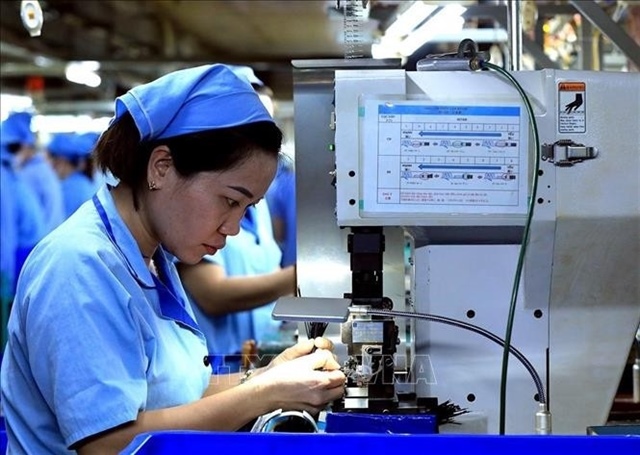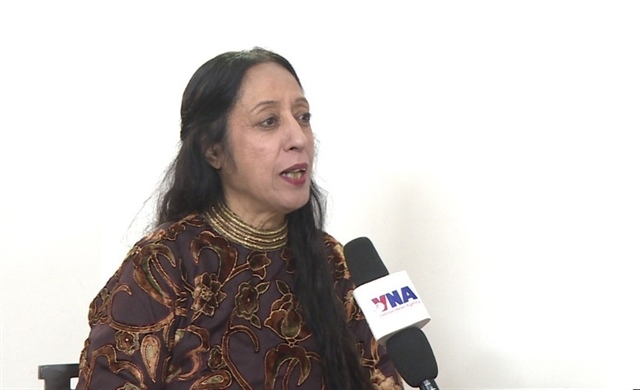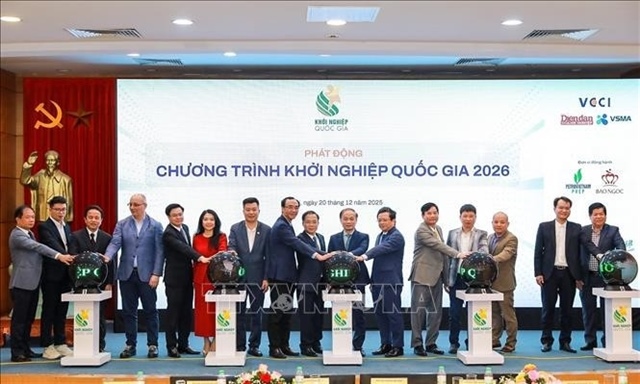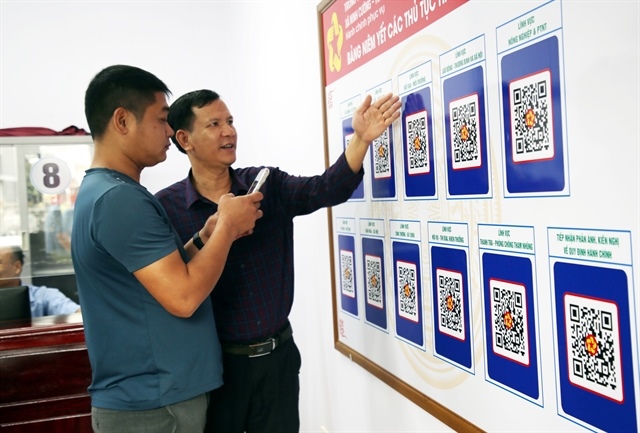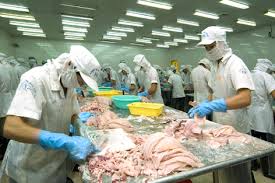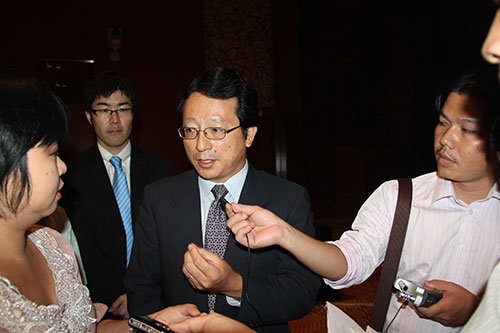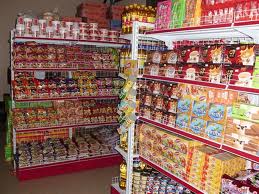Future FTA to fuel Viet Nam, EU trade
Future FTA to fuel Viet Nam, EU trade
The European Union (EU) and Viet Nam stand to benefit from a bilateral free-trade agreement to be signed by the end of next year, officials said at a business forum held in HCM City on Wednesday.
The move is expected to turn Viet Nam into a regional production base and business hub.
"The FTA will offer market-access for goods and service providers from both sides," said Jean-Jacques Bouflet, head of Trade and Economic Affairs for the EU in Viet Nam.
Under the FTA, tariffs on at least 90 per cent of trade and trade lines will drop to zero within seven years.
Negotiations on the FTA are expected to be concluded by the end of next year, according to Bouflet.
Currently, under the Most Favoured Nation (MFN) trade status, footwear has a 7.69 per cent tariff, and under the Generalised Scheme of Preferences (GSP) status, a 3.5-4 per cent tariff rate.
Textiles operate under a 12 per cent tariff under MFN status and a 9.6 per cent duty under the GSP rate.
The GSP rate is given to eligible exporters of developing countries such as Viet Nam.
From 2009 to 2011, only 53.7 per cent of Vietnamese exports qualified for the GSP rate of 3-5 per cent.
Moreover, changes in the GSP rate will take effect on January 1.
Some of Viet Nam's major export items to the EU could be adversely affected under these changes.
Under the new rule, any country holding a share of more than 17.5 per cent in total imports of a particular item will not enjoy preferential tariffs.
In the next review, if shipments of such items show that they exceed the so-called GSP maturity threshold, many Vietnamese exports may no longer enjoy preferential tariffs under the new GSP, Bouflet explained.
However, the FTA currently under negotiation would supersede current preferential tariffs and eliminate existing GSP or MFN rates.
"Apart from tariff reductions, the bilateral FTA will have a wider impact, including an increase in the flow of quality investment from Europe and transfer of advanced green technology," Bouflet said.
"The FTA could turn Viet Nam into a regional production base and business hub," he added.
Speaking at the forum, Dang Hoang Hai, head of the Ministry of Industry and Trade's European Market Department, said the FTA with the EU would be an effective tool to help Viet Nam realise its export strategies by 2020.
At that time, Vietnamese exports to the EU are expected to account for 20 per cent of total export structure.
However, Hai noted that foreign companies were more aware of the existence of preferential tariffs and knew how to take advantage of them.
On the other hand, Vietnamese companies' understanding and interest about preferential tariffs, particularly in the north, was still low, he said.
Many local companies were worried about the challenges that the FTA will produce, including increased competition from European businesses.
Hai said Vietnamese businesses would not only face competition from European importers, but also other countries in Asia and the United States.
He urged them to accept the new trading scheme and improve their businesses.
"Viet Nam should take advantage of the upcoming FTA to exchange modern technology and improve product quality as well as management skills," he said.
In the future, EU trade barriers will no longer be tariffs, but technical standards, such as for food safety and hygiene.
"Trade opportunities will depend on the competitiveness and proactive capacity of Vietnamese businesses," Hai said.
Also speaking at the seminar, Vo Tan Thanh, director of the HCM City branch of the Viet Nam Chamber of Commerce and Industry, said there were "great opportunities and high potential to enhance trade between the EU and Viet Nam in the near future".
The EU is Viet Nam's second-largest trading partner and largest export market. Last year, bilateral trade reached $29.1 billion.
Viet Nam exports to the EU totalled $20.3 billion and imports from the EU were $8.8 billion.
Viet Nam's key export items to the EU are footwear, textiles and garments, seafood, coffee and wood products.
In the first quarter of this year, Viet Nam's exports to the EU totalled $5.7 billion, accounting for 19 per cent of Viet Nam's global export revenue.
As of January this year, the EU had 1,810 investment projects operating in Viet Nam with registered capital totalling $34.28 billion in various sectors, including industry, construction and services.
The EU-Viet Nam business forum was organised by the Viet Nam Chamber of Commerce and Industry in collaboration with the delegation of the EU in Viet Nam.
The annual event, first held in 2007, promotes trade and investment activities.
vietnamnews


